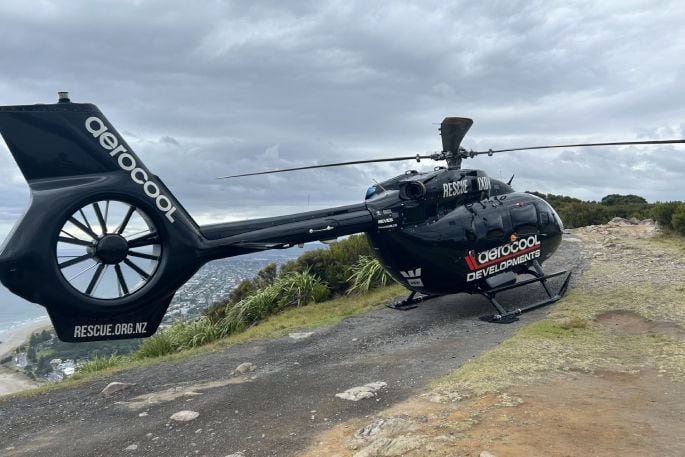The Aerocool Rescue Helicopter saves the lives of those in hard-to-reach locations such as Mauao summit.
The helicopter completed its third Mauao summit rescue of this year at the beginning of July; that’s five times in the past year and a half.
Last month, it carried out 38 life-saving missions in coastal Bay of Plenty.
With seven inter-hospital transfers in Tauranga, three in Whakatāne and three in Rotorua, the Aerocool Rescue Helicopter has been busy.
July began with a call on the afternoon of Monday, July 1 requesting a rescue helicopter be sent to Mauao summit.
The person in danger was a man in his 60s experiencing a medical event.
Due to the remote location, and the patient being unable to descend from the summit in his condition, it was critical the helicopter was able to get the onboard critical care flight paramedic [CCFP] to him for treatment before he was swiftly flown to Tauranga Hospital for further treatment,” says an ARH spokesperson.
“The Aerocool Rescue Helicopter reached Mauao summit and landed in 10 minutes and flew from Mauao summit to Tauranga Hospital in less than five minutes.
“There is no helipad, the Aerocool Rescue Helicopter is an H145 helicopter that is specifically designed to be able to land in remote/ rural areas with skids that make it easier to land on rough or uneven terrain. Skids allow a helicopter to land on surfaces that would be difficult to manoeuvre on with wheels, such as rocky or muddy terrain. Additionally, skids provide a wider base of support for the helicopter, making it more stable on the ground.”
The spokesperson says a pilot’s role is to fly the aircraft and navigate through tough and hard-to-reach areas/locations.
“Once they have reached the patient’s location, unless under specific circumstances, the pilot remains inside the helicopter with the engine running, ready to take off immediately once the patient is loaded into the helicopter.”
They say the crewman can be considered the all-round helper of the helicopter.
“They are responsible for helping the pilot navigate to the location of the patient.
“They are in charge of controlling the winch from the helicopter and assist both the pilot and CCFPs where they can with whatever is needed to carry out each life-saving mission.”
A critical care flight paramedic’s role is to provide medical aid to the patient.
“They are highly skilled and trained in rapid medical response.”
When the rescue helicopter lands, the paramedic immediately treats the patient before transporting them to a hospital for further treatment.
“In a situation where a patient is required to be winched, for example, from the bush, the CCFP is the crew member that is winched down to the patient’s location to secure the patient for winching back up into the helicopter.”



0 comments
Leave a Comment
You must be logged in to make a comment.